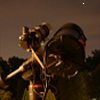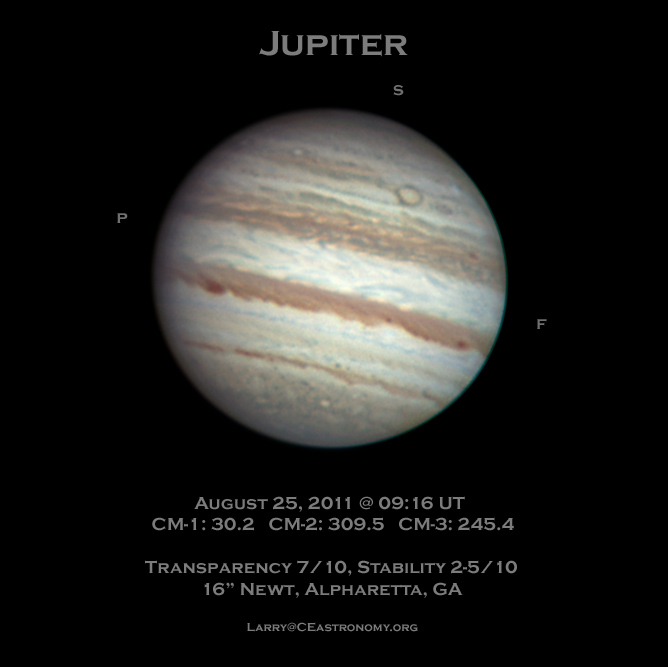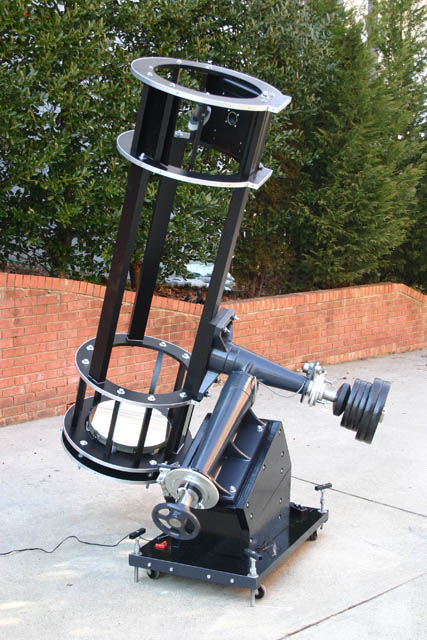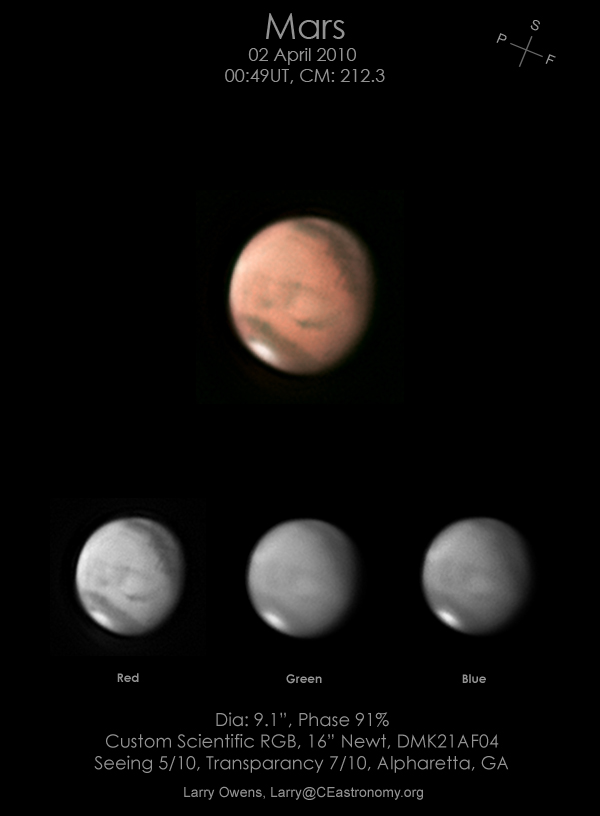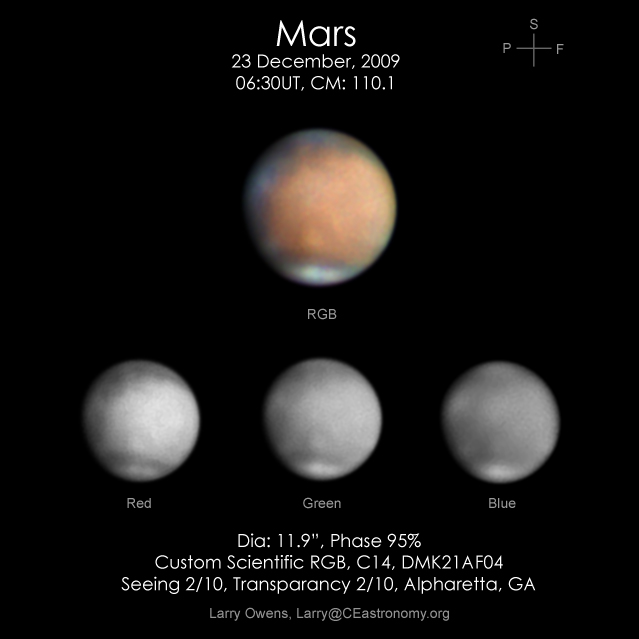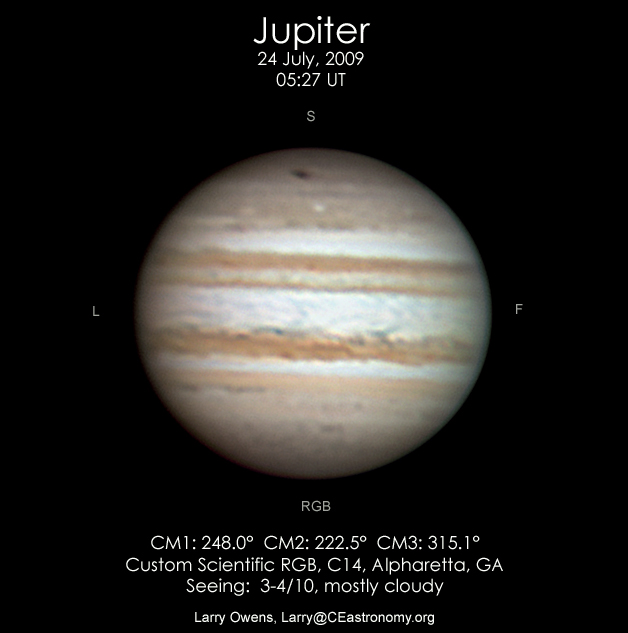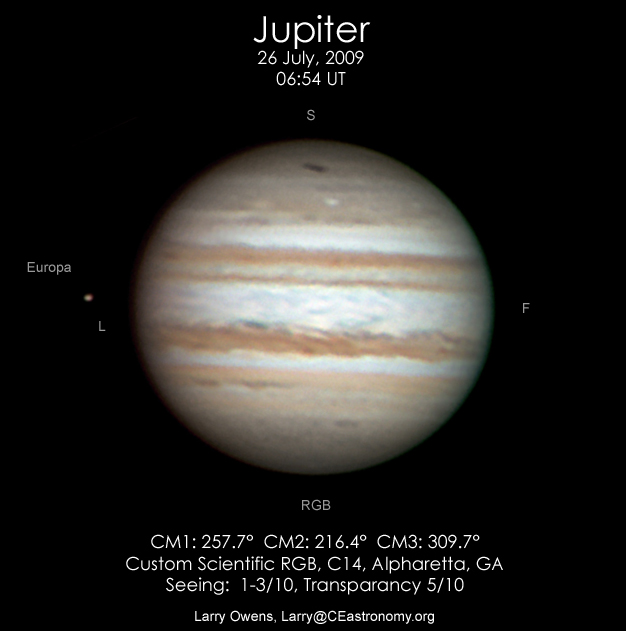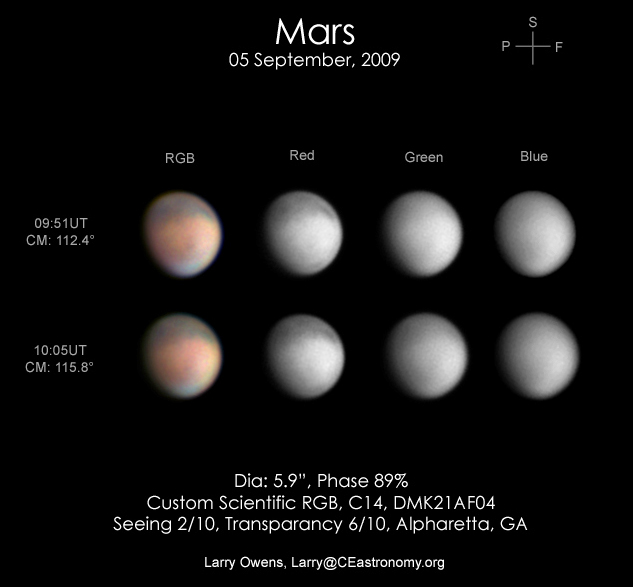Hello everyone. The planet Mars is fast approaching for an opposition this January, so it’s time to sharpen your imaging skills. Although this will not be the best opposition we’ve had recently, at 14.1″ in apparent size on January 27th the planet will be large enough for amateurs to capture a lot of detail. Here are some key dates for the event (courtesy SEDS):
Key Dates for Mars this Opposition
Dec 1, 2009
Mars leaves constellation Cancer and enters Leo.
Dec 3, 2009
Apparent diameter of Mars exceeds 10″.
Dec 21, 2009
Apparent brightness of Mars exceeds -0.5 mag.
Dec 22, 2009
Mars becomes stationary and then starts its retograde opposition loop, as Earth passes between the Red Planet and the Sun.
Jan 1, 2010
Mars shines at mag -0.77 in constellation Leo with an apparent diameter of 12.67″. Distance from Earth is 0.73885 AU (111 million km).
Jan 9, 2010
Mars leaves constellation Leo and enters Cancer again, during retograde opposition loop.
Jan 11, 2010
Apparent brightness of Mars exceeds -1.0 mag.
Jan 27, 2010
Closest approach of Mars and Earth (0.664 AU = 99.33 million km). Apparent diameter of Mars is 14.105″.
Jan 29, 2010
Mars opposition on Earth, Earth in inferior conjunction on Mars. Apparent brightness of Mars reaches -1.28 mag in constellation Cancer.
Feb 14, 2010
Mars’ apparent brightness becomes fainter than -1.0 mag.
Feb 21, 2010
Mars at its greatest northern heliocentric ecliptic latitude (+1.8489 deg).
Mar 5, 2010
Mars’ apparent brightness becomes fainter than -0.5 mag.
Mar 11, 2010
Mars becomes stationary to end its retograde opposition loop as the Earth has passed it on its inner orbit, and proceeds in prograde apparent motion.
Mar 22, 2010
Apparent diameter of Mars decreases below 10″.
Mar 25, 2010
Mars’ apparent brightness becomes fainter than 0.0 mag.
Mar 30, 2010
Mars moves beyond 1.0 AU distance.
Mar 31, 2010
Mars in Aphelion (1.66594 AU, 249.2 million km).
.
Although I haven’t been able to image recently, here are some images from August and September (by the way, this first image will appear in the February issue of Sky and Telescope magazine):


Dark skies, and get out there and image!
Larry Owens

